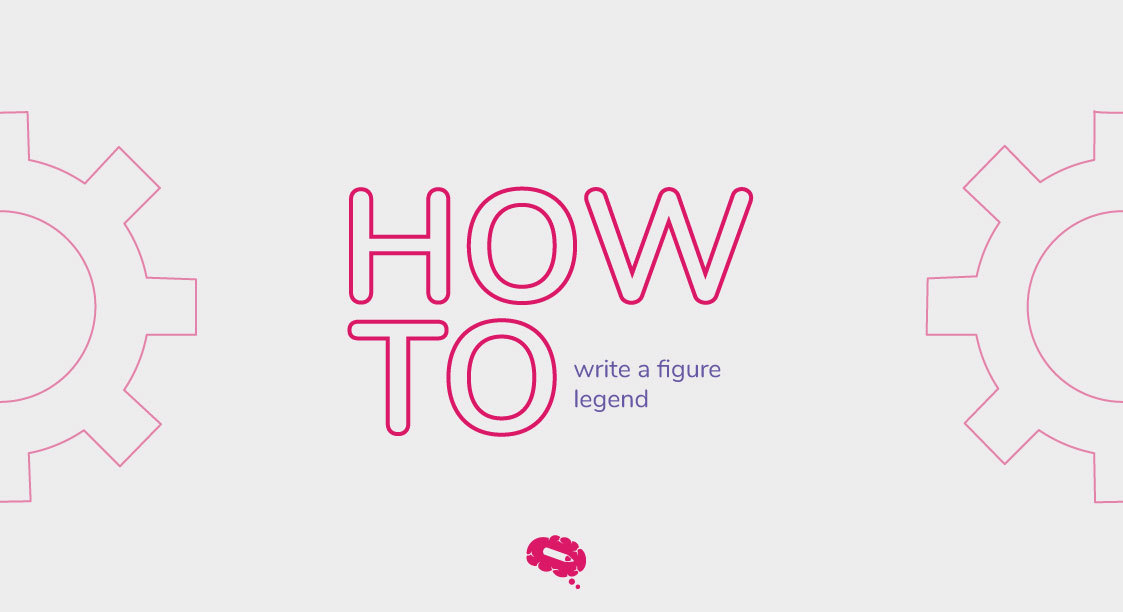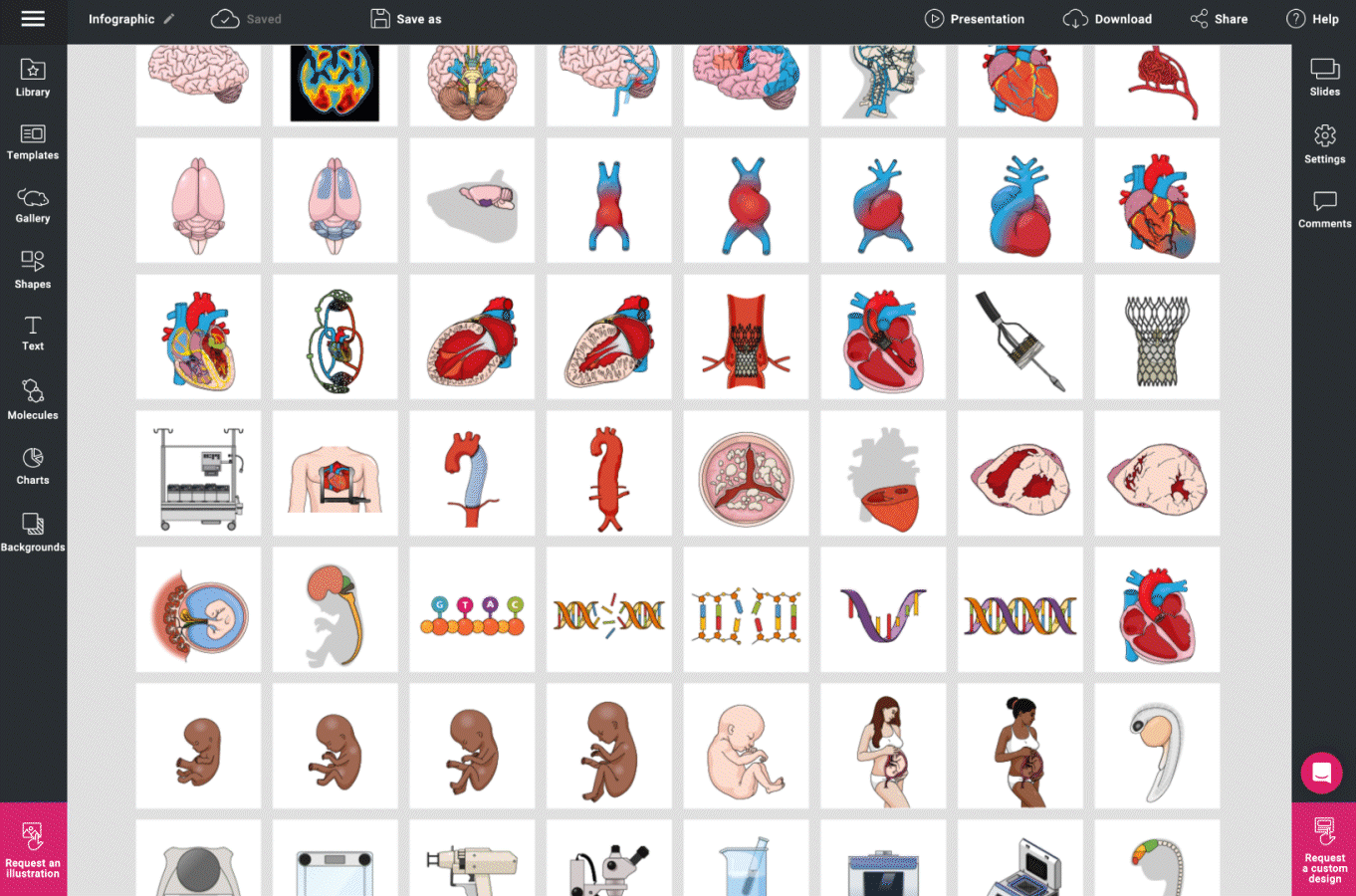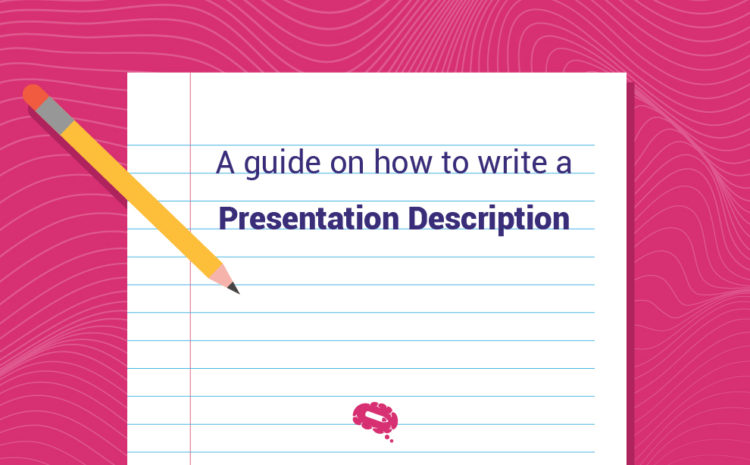t first glance, a figure legend might seem like just a simple caption beneath an image. But if you’ve ever wondered about the stories behind scientific discoveries or marveled at the clarity in understanding complex data through visuals, then you know these brief descriptions carry weight beyond their word count. Learning how to write a figure legend is akin to mastering the art of storytelling where each word counts and every detail matters – bringing life and comprehension to data visualizations that could otherwise be puzzling enigmas. So if you’re ready to transform mere images into epic tales of scientific quests, let’s delve into crafting compelling figure-writing legends that stand as pillars of knowledge within scholarly manuscripts.
What is a figure legend?
Definition of a figure legend
When we talk about a figure legend, we’re referring to the block of text accompanying figures – be they graphs, charts, diagrams, photographs, or any other kind of illustrative material – in scholarly articles, reports, and presentations. A figure legend serves as a guide: explaining what the audience is seeing without needing additional verbal explanation. It communicates critical information that is readily understood and ensures your entire figure- shows graphic stands on its own for clear comprehension, making it vital not only as an assistive component but as an integral part of presenting data effectively.
Purpose and importance of a figure legend in scientific writing
A potent way to assert the role and impact–the “why”–of a figure legend in scientific communication lies in considering it through two lenses: precision and independence. These descriptive parcels strive not just for accuracy but also aim to enable each visual component to function autonomously; allowing viewers to apprehend presented concepts with minimal reliance on surrounding text. In scientific discourse where results must advocate for themselves under rigorous scrutiny from peers and professionals alike, forgoing such clarity can denote the difference between revelation and obscurity—a principle anchoring science’s steadfast pursuit towards enlightenment over confusion.
Elements to include in a figure legend
Crafting an engaging figure legend is crucial for both clarity and comprehension. There are several key components you’ll need to include when figuring out how to write a figure legend effectively.
Title: Clear and concise title for the figure
The title serves as the entry point to your figure. Here’s what it should do:
- Summarize the essence: Offer a snapshot of what the figure represents.
- Avoid jargon: While precise, it shouldn’t be so technical that it gets confusing.
- Be succinct: Ideally, keep your title under 15 words to ensure it remains digestible at a glance.
For instance, instead of one sentence saying “Diagram showcasing variances in quadruped locomotion velocity sample size,” opt for “Speed Variation in Quadrupeds.”
Materials and Methods: Description of the techniques and methods used in the study
This part often gets overlooked but holds great significance:
- Clearly outline experimental procedures or data-gathering techniques linked to the presented results.
- Mention relevant equipment, settings, or models if they impact understanding.
Imagine this component as paving a path for your peers to appreciate the methodology behind your insights — essential for replication and validation purposes.
Results: Statement of the findings or results that can be inferred from the figure
Here, conciseness meets precision:
- Focus on pivotal outcomes that are visually represented within your figure.
- Refrain from discussing implications; save that for your main text.
“Graph indicates a steady increase in renewable energy adoption from 2000–2020.” This line instantly relays what one should deduce from observing the graph.
Definitions: Explanation of any symbols, abbreviations, or terms used in the figure
Define every non-standard symbol and acronym introduced within:
- Put terms into context without expecting prior knowledge.
- Ensure each definition helps eliminate ambiguity surrounding visual elements.
By following these directions diligently while writing about each element needed in a figure legend, you lay down sturdy pillars supporting clarity and ease of interpretation — hallmarks of high-quality scientific communication.
Tips for Writing an Effective Figure Legend
Creating a figure legend that stands out in clarity and usefulness doesn’t have to be daunting. With a few strategic practices, you’ll not only convey your message but also enhance the reader’s understanding of your visual data. Here are some tips to get it right.
Be Concise Yet Informative: Use Clear and Concise Language to Convey the Necessary Information
To communicate effectively through your figure legend, balance is key. Aim to be succinct without sacrificing completeness. Start with the essential information that describes your figure and its relevance. Each word should serve a purpose – there’s no room for fluff here! But remember, while terseness can sharpen your legend’s impact, it shouldn’t come at the expense of necessary details. Make sure readers walk away with a thorough understanding of what they’ve observed.
Use a Consistent Format: Follow a Consistent Format Throughout All Figure Legends in Your Document
Consistency is vital; it’s like a visual thread that ties together all pieces of your workable puzzle. If you present one legend as a descriptive paragraph and another as bullet points, you risk unsettling the reader’s flow. So decide on one format – whether it’s full sentences or fragmented descriptions – and stick with it across every figure legend. This consistency helps establish rhythm for easier digestion of content and displays professionalism across your document.
Include Specific Details: Provide Enough Information for Readers to Interpret the Figure Accurately
When considering how to write a figure legend, specificity is non-negotiable. Imagine walking someone through the methods section of your graphic without being there in person—you’d furnish them with all the distinguishable elements they need for interpretation. Whether defining an abbreviation used within the graphic or explicitly stating what each axis represents, these specifics reinforce comprehension and diminish ambiguity.
Remember this:
- Clarify abbreviations
- Describe symbols
- Detail axis references These steps ensure everyone—regardless of expertise level—can follow along smoothly.
Consider Length and Readability: Keep the Text Within a Reasonable Length and Ensure It Is Easily Readable
You aim to enlighten, not overwhelm; therefore, paying attention to length is paramount when drafting legends. An unwieldy paragraph crammed into a tiny font detracts from readability as much as overly technical jargon does from comprehensibility. Stick around 50-150 words — sufficiently long enough to include all pertinent data points, yet short enough not to deter focus from the actual figure, itself.
Be vigilant about readability too — use font sizing consistent with body text and figure caption so eyes can transition easily back and forth between text and figures without strain or confusion.
Follow these guidelines devotedly:
- Maintain brevity without being enigmatic.
- Embrace precision—every detail contributes value.
- Craft each word carefully—their collective contribution brings enlightenment.
- Optimize typography – kindness towards readers’ eyes pays dividends in engagement. By adhering religiously to these suggestions about how to write a figure legend, you prepare the ground where comprehension germinates readily—a foremost goal in scientific communication whose ripple effects amplify reader enlightenment exponentially.
Figure legend examples
Bringing your data to life through visuals is an integral part of scientific communication, and a well-crafted figure legend can make or break the effectiveness of these images. Below, I’ll walk you through three varied figure legend examples to illustrate how to write a figure legend in different contexts.
Example 1: Legend for a bar graph depicting population growth over time
Figure 1: Global Population Growth from 1950 to 2050
This bar graph illustrates the estimated increase in global population every decade. Starting from 1950, it projects future growth up until the year 2050. The Y-axis quantifies the world population in billions while the X-axis represents each decade. Each bar’s height corresponds to the total population size during its respective time period. Note that projections after the current year are based on the medium-variant forecast by United Nations demographic studies.
Example 2: Legend for a microscope image showing cell structures
Figure 2: Fluorescent Imaging of Mouse Neurons Cultured In Vitro
Captured using confocal microscopy at a magnification of ×400, this image displays primary mouse neurons isolated and grown in controlled lab conditions for two weeks. Cell bodies are stained with DAPI (blue), indicating nuclei locations; dendrites are marked by MAP2 immunoreactivity (red); axons express Tau-1 (green). These colors were chosen due to their distinct emission spectra which minimize overlap when viewed concurrently.
Example 3: Legend for a line graph representing temperature changes
Figure 3: Annual Mean Temperature Fluctuations in Central Europe (1900–2020)
Represented here is a record of temperature deviations in Central Europe over more than a century. Using historical weather station data and modern satellite readings, this line graph demonstrates trends relative to the average temperatures recorded during this period. The central bold line traces yearly mean values while lighter lines indicate monthly minima and maxima, highlighting seasonal variability within each year’s overall trend.
In all these examples notice how specificity is key—each legend provides just enough detail for clarity without overcrowding with excess information. They’re precise yet accessible, revealing insights into not only what each visual represents but also hinting at methods applied and implications understood from reading further into your study’s findings completed experiments, methods sections or observations—elements any effective figure legend should aspire to include.
Best practices for formatting a figure legend
When crafting your scientific narrative, the clarity of your figures is just as integral as the text that accompanies them. Learning how to write a figure legend demands more than factual precision; it requires an eye for design and adherence to particular formatting standards.
Take into account journal guidelines or style guides for formatting specifics
Firstly, let’s delve into the institutional essentials. Different journals possess distinct stylistic requisites that govern not only the language you employ in caption writing but also how your figure legends are structured. Before putting pen to paper—or fingers to keyboard—it’s imperative that I urge you to scrutinize the specific formatting guidelines laid out by the journal you’re submitting supplementary figures to. These can be found within their author guidelines and often include:
- Font type and size: A general rule is using serif fonts like Times New Roman for print and sans-serif like Arial for online publications.
- Spacing requirements: Single-space lines often suffice unless otherwise indicated.
- Margin stipulations: Preserve ample white space around your text to facilitate easy reading.
By adhering directly to these instructions, you ensure that not only does your content match editorial standards but also escape avoidable hiccups during the publication process.
Use appropriate font size, formatting, and layout to enhance readability
Enhancing readability isn’t mere vanity; it serves a fundamental role in imparting knowledge effectively. To get this right with your figure legends, consider:
- Font Size: It must be large enough to be legible on its own yet not so substantial as to overshadow the accompanying figures.
- Boldness & Italics: Deploy these tools judiciously—bold titles can guide the reader, while italicization can highlight specific terms or groups within your data set.
- Alignment: Maintaining left-aligned text ensures a straightforward reading flow. Centered or justified layouts might seem appealing aesthetically, yet they can disrupt the ease of comprehension.
- Layout Consistency: Uniformity across all legends aides readers as they transition from one figure to another without cognitive jolts provoked by inconsistent formats.
Remember, even if creativity sparks a desire for novel presentations—the ultimate goal remains a legible, comprehensible, well-integrated piece resonating with scientific acumen. When implemented mindfully, these best practices help turn complex visual information into digestible insights through clear and captivating figure legends that complement research writing and elucidate your research findings with grace and academic rigor.
Common Mistakes to Avoid in Writing Figure Legends
Writing a figure legend might seem straightforward until you’re hovering over your keyboard trying to nail the perfect description that’s both a complete sentence and concise. Glitches can sneak up on us, even when we think we have everything under control. But fear not! I’m here to walk you through some of the common pitfalls in crafting legendary legends.
Omitting Important Details
When I say important details are crucial, I mean they’re the bread and butter of your figure legend. An alluring visual can lose its charm if the viewer is left playing a guessing game due to missing bits of information.
- Ensure each symbol or variable is defined; your readers aren’t mind-readers!
- Clarify any acronyms—what’s obvious to you might be obscure to others.
- Specifications of experimental conditions: Your findings hinge on these parameters, so highlight them clearly.
Skimming over details may lead readers astray or even challenge the credibility of your work. Don’t let brevity rob the richness of your figure; remember, precision paves the way for comprehension.
Including Unnecessary Information
Hand-in-hand with omitting crucial elements comes another faux pas: cluttering a legend with fluff that should rather be part of comprehensive texts elsewhere in your document. When learning how to write a figure legend, it’s key to strike a balance between being informative and overwhelming readers with TMI (too much information).
Consider these points while pruning:
- Exclude elaborate background details: Stick to what’s relevant to interpreting the figure.
- Avoid repeating data presented within the figure: If it’s there, no need for an encore.
- Resist explaining basic concepts: Unless it’s central or unique, keep it out.
The key point of art is to ensure legends serve as useful guides without morphing into unwelcome distractions from the main act—the figures themselves.
Using Ambiguous or Vague Language
Clear and specific language isn’t just nice; it’s necessary. Resist the temptation to use general terms that could muddy understanding. After all, clarity is king!
Here’s how you can sharpen those sentences:
- Favor precise descriptors over vague quantifiers like “high” or “significant.”
- Steer clear from using jargon unless it’s standard across your field—and even then, briefly explain if there’s any chance of confusion.
- Choose active voice where possible; passive voice can obfuscate who did what in your methods.
Remember that ambiguity is often just specificity waiting to be uncovered. A crystal-clear legend reflects attention paid not only to accurate visuals but also to articulate explanations accompanying them.
By dodging these common missteps when figuring out how to write a figure legend, you’ll beautifully bridge the gap between eye-catching images and indispensable insights—crafting effective figure legends that not only depict but truly illuminate science’s stories.
Revising and editing your figure legend
Drafting the perfect figure legend doesn’t end after the initial write-up. In fact, ensuring that each legend is as clear and accurate as possible requires a diligent process of revising and editing.
Proofread and revise your legend for clarity and accuracy
When I set out to refine a figure legend, my primary focus is on enhancing its clarity and precision. Remember, regardless of how groundbreaking the study may be, unclear legends can obscure its impact and confound readers. Follow these steps to bolster your revision process:
- Read Aloud: I find it useful to read the legend aloud. Doing so helps in catching awkward phrasing or overly complex sentences that could confuse readers.
- Solicit Peer Feedback: Sometimes we’re too close to our work to see minor faults. That’s why I embrace getting feedback from colleagues or mentors who can offer a fresh perspective on whether the descriptions are as intuitive as you think.
- Check for Accuracy: Ensure every piece of data mentioned aligns with what’s presented in the figure. Mismatched information leads to mistrust and diminishes the credibility of your work.
- Simplify Language: Remove jargon unless essential, replacing it with simpler terms when possible—aim for ninth-grade-level readability without compromising technical validity.
By methodically reviewing each statement, examining word choice, and comparing assertions against visual representations, we pave the way for a polished figure legend that contributes positively to our scientific communication.
Ensure consistency with the figure and the text in your document
Beyond individual revision, aligning your figure legend with other important elements within your document is crucial for maintaining coherence in your scientific narrative.
Make Sure It Matches:
- Confirm that names or labels used in both texts are identical—this avoids any potential discrepancies.
- Reflect upon whether style elements (like capitalization of specific terms) are standard throughout all legends within the paper.
Contextual Harmony:
- Verification is key; does every explanation within your legend corroborate with discussions in related sections? This includes introduction material methods or results discussions.
- The goal here is seamless integration; you want anyone studying the figures independently from text explanations to form correct interpretations effortlessly.
To sum up these practices — always recall that learning how to write a table legend or a figure legend indispensably involves polishing drafts into refined slices of information that heighten comprehension rather than cloud it. Just like artists applying finishing touches to their masterpieces, scientists must invest time in fine-tuning their figures and table legends for those pivotal peer-reviewed moments when clarity equates to recognized success.
Related article: The Ultimate Figure and Table Legends Guide
Wrapping up – Importance of a well-written figure legend
Navigating through the finer points of how to write a good figure legend here, we’ve covered essential ground. This journey has underscored that crafting a superbly articulated figure legend is both an art and a science—a fusion of clarity, precision, and informativeness.
Summarize the key points discussed in the content outline
We began with defining what a figure legend is and quickly understood its pivotal role in scientific communication. Recognizing that good figure legends act as guides through visual data, it’s evident they must be exactingly precise. An effective legend encapsulates:
- A clear and concise title that sets the stage for understanding.
- The Narrative of materials and methods gives context to the experiment or observation represented.
- The crux—the results: straightforward assertions our visuals intend to communicate.
- Finally, succinct yet exhaustive definitions for every symbol, term, or abbreviation used within the figure.
Being concise without skimping on crucial details was ordained as best practice when creating your own legends. Moreover, sticking to a consistent format ensures seamless reading throughout your document. Specifics are vital; they empower readers to interpret data accurately – cutting no corners there ensures your work is unambiguous.
Highlight the significance of clear and informative figure legends in scientific writing
In wrapping things up, let’s not underestimate the statistical significance of writing an excellent figure legend’s transformative power in scientific dissemination. Clear and informative, well-written figure legends bolster comprehension of key results; they bridge gaps between complex datasets and diverse audiences—who may span from fellow scientists to policymakers or even laymen keen on science—ensuring everyone can grasp the narrative told by figures.
Concluding this exploration reveals a fundamental truth: figures in scientific manuscript documentation aren’t standalone entities—they draw breath from other aspects of their legends. Thus, honing skillfulness in how to write a figure legend isn’t just about satisfying academic rigor; it’s about championing transparency and enhancing engagement with research findings at all levels.
A well-crafted figure legend propels scientific narratives forward. After all, what good is groundbreaking data if it languishes in obscurity due to poor explanation? As creators armed with knowledge imbue their illustrations with luminous clarity—rendered through meticulously drafted legends—they gift their audience the lens through which discoveries come into crisp focus.
Unlock the Power of Visual Representation for Your Research Discoveries!
Introducing Mind the Graph, your ultimate solution for transforming your findings into compelling visuals. Ever wished for a tool that effortlessly crafts graphs, pie charts, and infographics to showcase your research? Look no further! Mind the Graph offers the finest scientific figures to elevate your findings. Embrace the future of data visualization—try it now and watch your research stand out like never before!

Subscribe to our newsletter
Exclusive high quality content about effective visual
communication in science.





